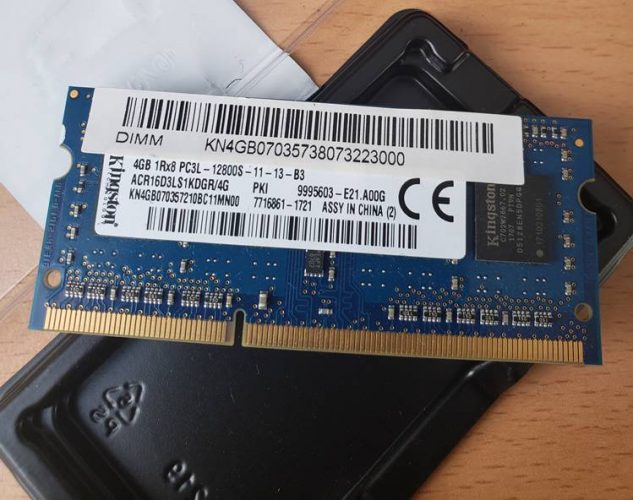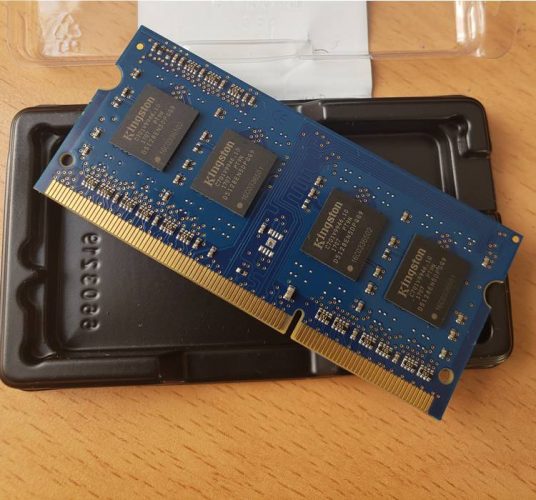RAM, or Random Access Memory, is a type of computer memory that can be accessed and written to randomly, as the name suggests. Its main function is to store data that the computer is currently using or processing. When you click open a computer program, the computer loads the data for that program into RAM so the processor can quickly access it.
RAM is volatile memory, meaning it is wiped clean when the power is turned off. This is in contrast to non-volatile storage devices like hard drives and solid-state drives, which retain data even when the power is turned off.
The size of the RAM can have a big impact on its performance. A computer with more RAM can run more programs at the same time and switch between them more quickly, while a computer with less RAM may struggle to run multiple programs at once or may run slowly when switching between them. By saying it, it’s important to ascertain first what the maximum RAM capacity your computer, laptop or any other device can support. If, for example, your system can only support up to 16 GB of RAM and you can see two slots on the motherboard, the maximum capacity of RAM sticks that can be used is either one card of 16 GB or two cards with 8 GB capability. If you exceed the max figure, at best the system will ignore the extra RAM capacity, at worst the computer will refuse to boot, and instead you will hear a beeping sound.
Using two sticks rather than one larger stick is better, as it would encourage faster reaction to commands. Also, it is recommended that both sticks should be of the same make and model to avoid conflict in the configuration, which would result in lower processing speed.
When the RAM is overloaded, it means that there is not enough available memory to support the tasks that the computer is performing. This can cause the computer to slow down or become unresponsive, as it has to constantly access the hard drive to store and retrieve data that it would normally keep in RAM.
The computer may display an error message or crash if the RAM is completely used up. In some cases, the computer may recover from this by closing programs or processes that are using a lot of memory. However, if the RAM is consistently overloaded, it can cause long-term performance issues and may even damage the hardware due to excessive heat created by the extra load that would eventually damage the motherboard and other components.
To avoid overloading the RAM, it is important to make sure that the computer has enough memory to support the Apps and tasks that you are running. If the computer is frequently running out of RAM, you may need to add more memory or upgrade to a computer with a larger amount of RAM.
Internet pages and tabs that are no longer required should be closed, while applications that run in the background need to be checked priodetly and trimmed if necessary, such as grammar and spell checkers that continue to demand RAM usage although the user is not currently using the feature. Yes, you can use a feature called “virtual memory” to allow a computer to use space on the hard drive as an extension of the RAM. Virtual memory allows a computer to temporarily store data that it would normally keep in RAM on the hard drive so that it can continue to run programs and perform tasks even when the RAM is full.
To enable virtual memory on a Windows computer, you can follow these steps:
- Open the Start menu and search for “Control Panel.”
- Click on “System and Security” and then “System.”
- Click on the “Advanced system settings” link on the left side of the window.
- In the “System Properties” window, click on the “Advanced” tab.
- Under the “Performance” section, click on the “Settings” button.
- In the “Performance Options” window, click on the “Advanced” tab.
- Under the “Virtual memory” section, click on the “Change” button.
- In the “Virtual Memory” window, you can adjust the size of the virtual memory by moving the slider or by entering a specific value in the “Custom size” field.
It is important to note that using virtual memory can have a negative impact on performance, as accessing data from the hard drive is generally slower than accessing data from RAM. Therefore, it is generally better to have enough RAM to support the programs and tasks you are running, rather than relying on virtual memory.
It is generally not necessary or recommended to clear the RAM manually, as the computer’s operating system is designed to manage the use of RAM automatically. When the RAM is full, the operating system will remove data from RAM that is no longer needed and store it on the hard drive, making room for new data to be loaded into RAM.
In some cases, you may want to close programs or processes that are using a lot of memory to free up RAM for other tasks. For example, if you are running multiple programs at once and one of them is using a lot of RAM, you may want to close it to allow other programs to run more smoothly.
To close programs or processes on a Windows computer, you can use the Task Manager:
- Press the “Ctrl,” “Alt,” and “Delete” keys at the same time to open the Task Manager.
- Click on the “Processes” tab to view a list of all running processes.
- Select the process that you want to close and click on the “End task” button.
It is generally not possible to completely clear the RAM, as the operating system and other programs will always be using some of the memory. However, closing unnecessary programs and processes can help to free up RAM for other tasks.
Several signs may indicate that a computer’s RAM is failing or experiencing problems:
- The computer is running slowly or experiencing performance issues, even when only a few programs are running.
- The computer is crashing or freezing frequently.
- The computer is displaying error messages related to memory or RAM.
- The computer is unable to boot up or is experiencing problems starting.
If you are experiencing any of these issues, the RAM may be failing or experiencing problems. It is important to diagnose and fix any problems with the RAM as soon as possible, as a faulty RAM module can cause serious issues with the performance and stability of a computer.
To diagnose problems with the RAM, you can try running a memory diagnostic tool or checking the computer’s event logs for errors related to memory. You may also want to try removing and reinserting the RAM modules, as this can sometimes fix problems with the connection. If these steps do not resolve the issue, it may be necessary to replace the faulty RAM module.

The next stage would be to remove the RAM sticks from the PC and examine them for physical signs of wear, such as discoloration and signs of physical fatigue. Before reinserting the sticks, you need to make sure that all of the gold colour terminals are clean and while handling, avoid touching the terminal’s surface with your finger. Our fingers can have a thin layer of dirt that could interfere with the terminal connecting properly to the circuit board, which would lead to a shutdown of the system.

Ensuring that the RAM is operating at its optimum capacity would enable the user to continue and enjoy the smooth running of the PC and help run applications to their maximum potential usefulness.

This page will be updated periodically when new information becomes necessary.